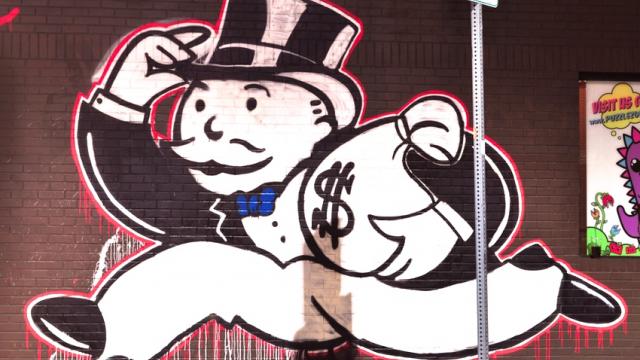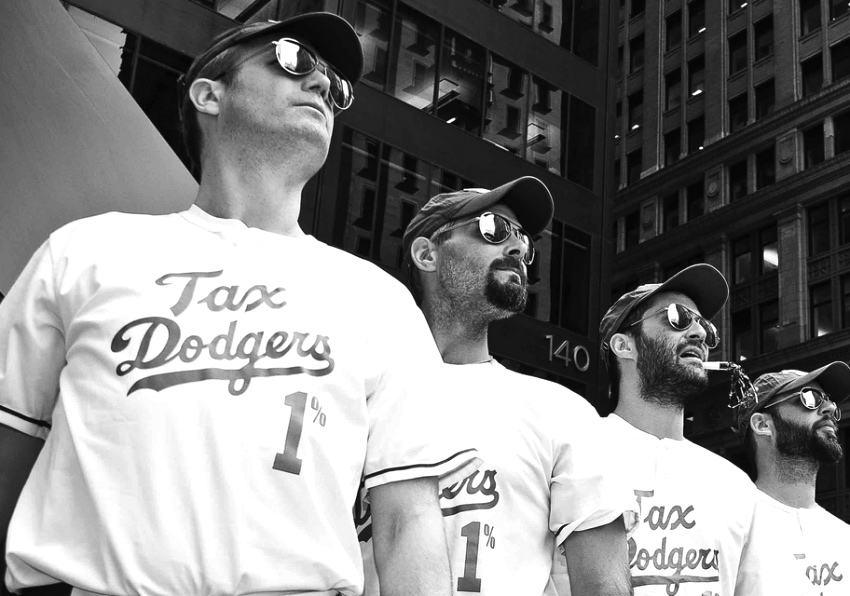
When it comes to paying taxes, most Americans think the wealthy do not pay their fair share.
There is a sharp divide, however, between Republicans and Democrats when it comes to taxing the rich, who provide most of the cash for political campaigns.
All the Republican tax proposals, in fact, cut taxes for the wealthiest Americans. Democrats, on the other hand, are prepared to raise taxes at the top, though they have not been very specific about how they would do so.
“Right now, the wealthy pay too little,” Hillary Rodham Clinton said at last week’s Democratic debate in Las Vegas, “and the middle class pays too much.”
But what could a tax-the-rich plan actually achieve? As it turns out, quite a lot, experts say. Given the gains that have flowed to those at the tip of the income pyramid in recent decades, several economists have been making the case that the government could raise large amounts of revenue exclusively from this small group, while still allowing them to take home a majority of their income.
It is “absurd” to argue that most wealth at the top is already highly taxed or that there isn’t much more revenue to be had by raising taxes on the 1 percent, says the economist Joseph E. Stiglitz, winner of the Nobel in economic science, who has written extensively about inequality. “The only upside of the concentration of the wealth at the top is that they have more money to pay in taxes,” he said.
The top 1 percent on average already pay roughly a third of their incomes to the federal government, according to a Treasury Department analysis that takes into account the entire menu of taxes – including income tax, payroll taxes that fund Medicare and Social Security, estate and gift taxes, excise and custom duties as well as investors’ share of corporate taxes. The tax bite on the top 0.1 percent is a bit higher. Most of those taxpayers insist they are already paying more than enough.
By comparison, the band of taxpayers right below them, in the 95th to 99th percentile, pay on average about $1 out of every $4. Those in the bottom half pay less than $1 out of every $10.
Sidestepping for the moment the messy question of just which taxes would be increased, how much more revenue could be generated by asking the rich to pay a larger share of their income in taxes?
To get the most accurate picture possible, throw in all the scraps of income, from the most obvious (like wages, interest and dividends) to the least (like employer contributions to health plans, overseas earnings and growth in retirement accounts). According to that measure – used by the Tax Policy Center, a joint project of the Urban Institute and the Brookings Institution – the top 1 percent includes about 1.13 million households earning an average income of $2.1 million.
Raising their total tax burden to, say, 40 percent would generate about $157 billion in revenue the first year. Increasing it to 45 percent brings in a whopping $276 billion. Even taking account of state and local taxes, the average household in this group would still take home at least $1 million a year.
If the tax increase were limited to just the 115,000 households in the top 0.1 percent, with an average income of $9.4 million, a 40 percent tax rate would produce $55 billion in extra revenue in its first year.
That would more than cover, for example, the estimated $47 billion cost of eliminating undergraduate tuition at all the country’s four-year public colleges and universities, as Senator Bernie Sanders has proposed, or Mrs. Clinton’s cheaper plan for a debt-free college degree, with money left over to help fund universal prekindergarten.
A tax rate of 45 percent on this select group raises $109 billion, more than enough to pay for the first year of a new $2,500 child tax credit introduced by Senator Marco Rubio, Republican of Florida.
Move a rung down the ladder and expand the contribution of those in the 95th to 99th percentile – who earn on average $405,000. Raising their total tax rate to 30 percent from a quarter of their total yearly income would generate an additional $86 billion. That’s enough to cover the cost over eight years of repealing the so-called Cadillac Tax on high-cost health plans, which Senator Sanders and Mrs. Clinton have endorsed.
A 35 percent share produces $176 billion – roughly the amount that the Federal Highway Administration has estimated is needed each year to improve conditions significantly on major urban highways.
Alternatively, those tax increases could be used to help reduce government borrowing: Some combination of those raises could go a long way toward wiping out this year’s estimated federal deficit of $426 billion.
“Most economists today would agree that raising taxes modestly would bring in more revenue” without doing any serious damage to the economy, said Roberton Williams, a fellow at the Tax Policy Center. The big question is how much is too much, because at some point, higher tax rates would discourage extra investment and work.
All the Republican candidates share the party’s traditional opposition to raising taxes on the wealthy, arguing that it would ruin the economy by sopping up money that would otherwise be used to create jobs. Lowering taxes, they say, will unleash a torrent of economic activity that will in the long run spur growth and revenue.
But most mainstream economists, including some on the conservative side of the divide, concede that even with optimistic projections about growth and spending cuts, the Republican plans would leave a whopping budget gap, requiring more borrowing, not less. Revamping the tax code along these lines would also decrease the share paid by those at the top.
The argument for raising tax rates on the rich tends to focus on the vast gains that this group has enjoyed in recent years compared with everyone else. The top 0.1 percent of American families — each with net assets greater than $20 million — own more than 20 percent of the all the household wealth in the country. In the 1970s, that same sliver of the population controlled 7 percent.
That shift is behind Senator Sanders’s repeated vow to compel Wall Streeters and others in the Rolex-and-Maserati set to pay more than they do now.
“Let me tell you, Donald Trump and his billionaire friends under my policies are going to pay a hell of a lot more in taxes today — taxes in the future than they’re paying today,” he declared in Las Vegas.
Middle-income families make substantially less money than they did 15 years ago, once inflation is taken into account. The economist Thomas Piketty blames, among other things, “the spectacular lowering of top income tax rates” for the sharp rise in inequality.
The lower rate — generally a maximum of 23.8 percent — on capital gains, or profits from investments, is particularly problematic, Mr. Piketty argues. Estimates show that nearly 70 percent of capital gains benefits go to the top 1 percent. A recent study by Adam Looney at Brookings and Kevin B. Moore at the Federal Reserve found that “the reduction in the long-term capital gains rate is the primary reason” that the income tax system had become less effective in reducing wealth inequality.
Aided by a phalanx of lawyers and accountants, the rich have become adept at figuring out ways to shift earnings that would normally be taxed at the top 39.6 percent rate on ordinary income into capital gains, said the economist Gabriel Zucman of the University of California, Berkeley, who is researching the link between widening inequality and tactics – legal and illegal – used by the wealthy to sidestep taxes.
Shifting earnings from one tax category to another is part of the reason that even the top 0.1 percent pay on average no more than a quarter of their income in federal individual income taxes – despite that top tax bracket of 39.6 percent, according to a Treasury Department analysis.
“Why give a blank check to all of these guys?” Mr. Stiglitz, the liberal economist, asked. He pointed out that current tax law makes no distinction between, say, investing abroad, speculating in land or building a new factory. A better approach, he said, is to say: “We’ll give you generous deductions if you invest in America.”
Eliminating the preferential rates on capital and dividends would generate $1.34 trillion over the next 10 years, according to the nonpartisan Congressional Budget Office.
Other breaks that critics say subsidize wealth inequality include one that allows people to avoid capital gains taxes on inherited assets. Getting rid of that adjustment would generate $644 billion over a 10-year period, according to the Congressional Budget Office.
Ending the deferral on corporate profits kept overseas – a boon for the wealthy that Robert S. McIntyre, the director of Citizens for Tax Justice, calls “the biggest corporate loophole” – would generate $900 billion over 10 years. (Mr. Trump also supports shutting down that deferral.)
Although an overwhelming proportion of Americans complain that many wealthy people don’t pay their fair share in taxes, Democratic voters are more likely to be upset about it than Republicans. According to the Pew Research Center survey, nearly three out of every four Democrats said it bothers them “a lot” compared to 45 percent of Republicans.
Yet the problem that any president – Democrat or Republican – is going to face in altering the tax code is getting Congress to agree. Researchers have repeatedly found that a top priority of the wealthy is reducing their tax burden and that they largely prefer, unlike a majority of the general public, to cut spending rather than raise taxes.
Senator Ron Wyden, the top Democrat on the Finance Committee, said maneuvering any tax overhaul “through that gauntlet of special interests is a herculean task.”
3 WAYS TO SHOW YOUR SUPPORT
- Log in to post comments














